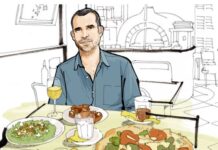This can lead to an over-indulgence in one’s comfort food of choice, as well as weight gain and obesity, potentially sources of yet more stress.
The brain area affected is the lateral habenula, an organ that exists in both mice and humans. Under normal conditions, the region produces a mild, unpleasant sensation in the short-term presence of a high fat diet, switching off the brain’s reward response, thus making further eating less pleasurable. Many comfort foods are high in fat.
Working with chronically stressed mice, the researchers found that the lateral habenula remained uncharacteristically silent as high fat foods were being eaten. The mice kept eating, apparently for pleasure, without becoming satiated.
Upon further analysis, the researchers discovered that after giving stressed mice a calorie-free sweetened food pellet, they consumed twice as much sweetened food pellet (or liquid) than non-stressed mice. This demonstrates that a preference for sweets — even if calorie-free — persisted in the stressed mice.
Confirming their finding, when the researchers re-activated the lateral habenula using optogenetic light that can control neuronal activity, the mice stopped over-eating.
The study is published in Neuron.













